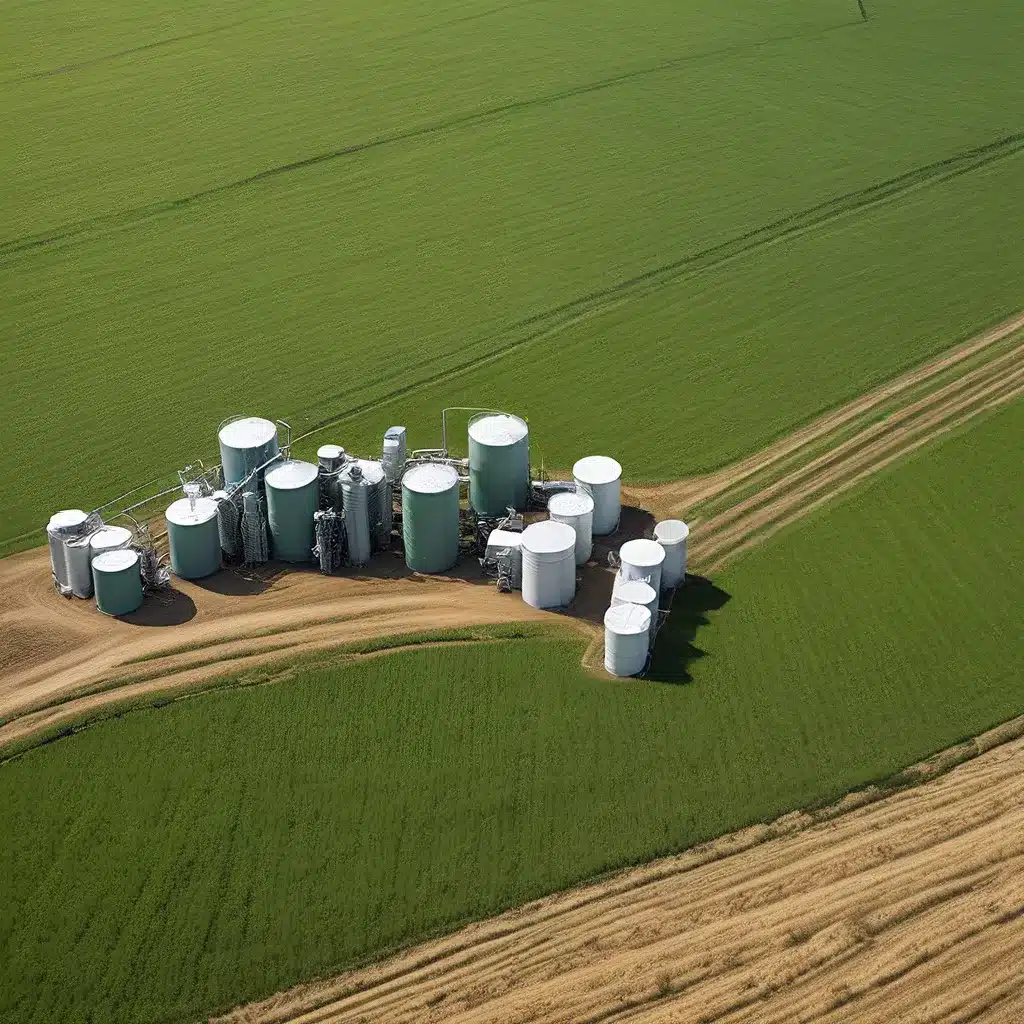
As we grapple with the pressing need to reduce our reliance on fossil fuels and mitigate the devastating effects of climate change, the spotlight has turned towards the promising realm of biofuels. But let me tell you, this ain’t your grandpappy’s biofuels – we’re talking about a whole new era of advanced feedstocks and production processes that are poised to revolutionize the game.
It all starts with those first-generation biofuels, made from good ol’ sugar, starch, and oil crops. Sure, they got the job done, but they were kinda like the training wheels of the biofuel world. Now, we’ve got second-generation cellulosic biofuels, which use non-food crops and waste biomass as their feedstocks. And let me tell you, these bad boys are where the real magic happens.
Cellulosic Biofuels: Turning Trash into Treasure
You see, that pesky little thing called cellulose – the stuff that makes up the cell walls of plants – is the key to unlocking the next level of biofuel production. And the best part? We’ve got tons of the stuff just lying around, waiting to be transformed into fuel. Think about all those corn stalks, wood scraps, and even household waste – with the right technology, we can turn that junk into liquid gold.
The production process for cellulosic biofuels is where the real engineering wizardry comes into play. It’s a multi-step dance that involves breaking down that tough cellulose into simple sugars, and then fermenting those sugars into fuels like ethanol and butanol. And the best part? These advanced biofuels can reduce greenhouse gas emissions by up to 60% compared to fossil fuels, according to the Environmental Protection Agency.
But wait, there’s more! We’re not just talking about cellulosic biofuels – there’s a whole new frontier of third-generation biofuels that use algae as their feedstock. Yup, those slimy green critters that grow in ponds and lakes are the latest darlings of the biofuel world. And let me tell you, they’re not just good for making your backyard look like a swamp – they’re also packed with oils that can be converted into biodiesel.
The Race for Advanced Biofuel Dominance
Now, I know what you’re thinking – if these advanced biofuels are so great, why aren’t we drowning in them already? Well, my friends, it’s all about that good old-fashioned race for technological dominance.
See, the United States government has been pouring billions of dollars into research and development for these next-gen biofuels, with initiatives like the Renewable Fuel Standard (RFS) and the Energy Independence and Security Act (EISA) leading the charge. The goal? To reduce our reliance on fossil fuels and boost the production of renewable, low-emission fuels.
But it’s not just the government getting in on the action – private companies and research institutions are also racing to crack the code on advanced biofuel production. From engineering super-efficient enzymes to designing cutting-edge biorefineries, the innovators of the world are putting their brains to the test.
And let me tell you, the stakes are high. Biofuels have the potential to not only slash greenhouse gas emissions, but also reduce our dependence on imported fossil fuels and create new economic opportunities for farmers and rural communities. But the path to realizing those benefits is anything but straightforward.
The Challenges of Advanced Biofuels
For all their promise, advanced biofuels aren’t without their fair share of challenges. One of the biggest hurdles is the cost of production. Extracting and converting cellulose or algae into usable fuel is a complex and energy-intensive process, which means the final product can’t always compete with the rock-bottom prices of fossil fuels.
And then there’s the thorny issue of land use and environmental impact. While cellulosic biofuels can use waste biomass as feedstock, expanding agricultural production to grow more energy crops could lead to deforestation, habitat loss, and increased greenhouse gas emissions. It’s a delicate balance that researchers are still trying to figure out.
But perhaps the most controversial aspect of advanced biofuels is the potential impact on food prices. When crops like corn and soybeans are diverted from the dinner table to the gas tank, it can drive up the cost of staple foods – a prospect that’s especially troubling for developing countries. Some studies have suggested biofuel production could increase corn prices by as much as 50%, which could have devastating consequences for global food security.
The Path Forward: Navigating the Biofuel Frontier
So, with all these challenges, you might be wondering – is the future of advanced biofuels even worth pursuing? Well, my friends, I’m here to tell you that the answer is a resounding YES.
Sure, there’s a lot of work to be done, and we’re still in the early stages of this technological revolution. But the potential benefits of advanced biofuels are simply too great to ignore. By leveraging innovative production processes, optimizing feedstock selection, and carefully managing environmental and economic impacts, we can unlock the full potential of these renewable fuels.
And let me tell you, the folks over at Firewinder are at the forefront of this exciting journey. They’re not just talking the talk – they’re developing cutting-edge technologies and solutions to make advanced biofuels a reality. From streamlining production processes to exploring novel feedstock sources, they’re leaving no stone unturned in their quest to revolutionize the world of renewable energy.
So, if you’re as pumped about the future of biofuels as I am, I’d encourage you to keep your eyes peeled for the latest advancements in this rapidly evolving field. Who knows, maybe one day we’ll be powering our cars with algae-based biodiesel or cellulosic ethanol – and Firewinder could be leading the charge.

